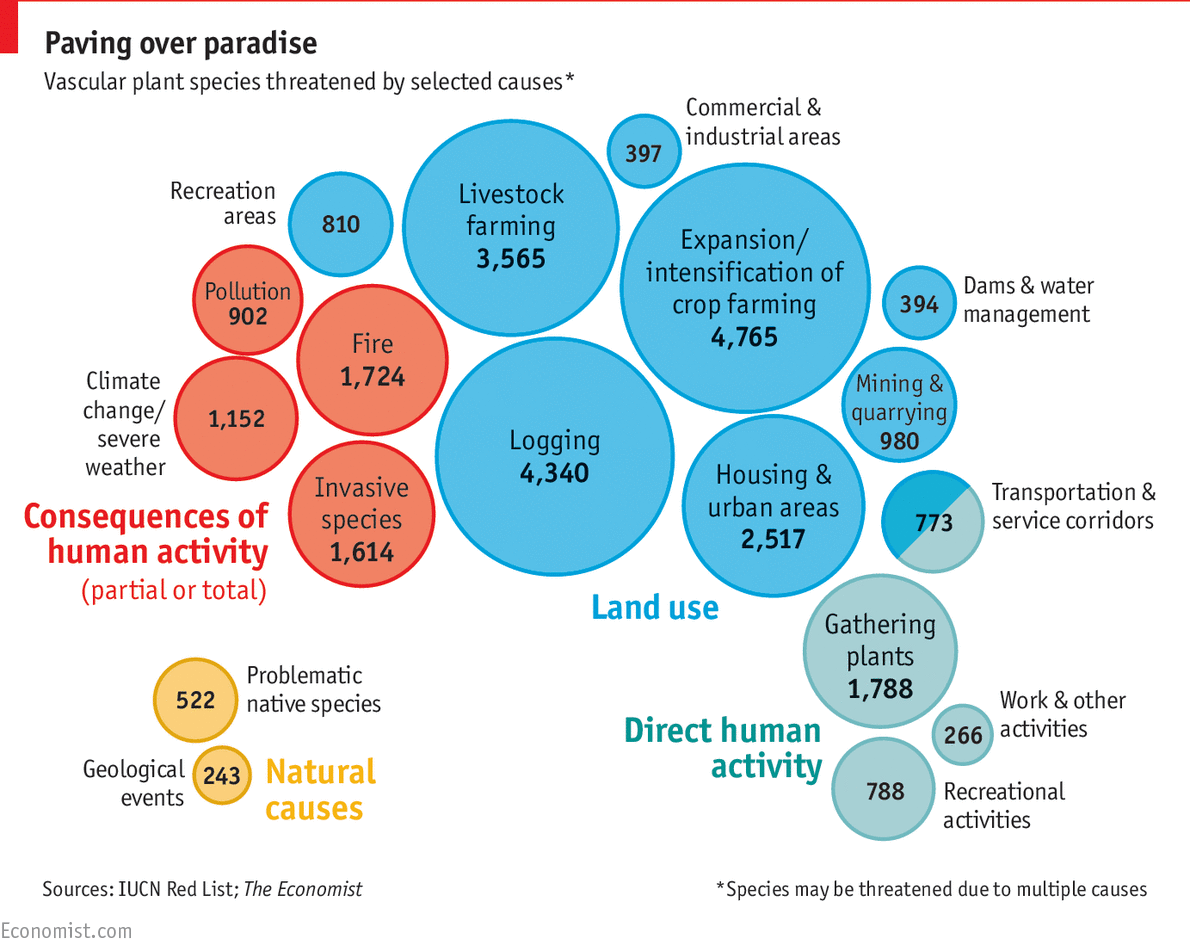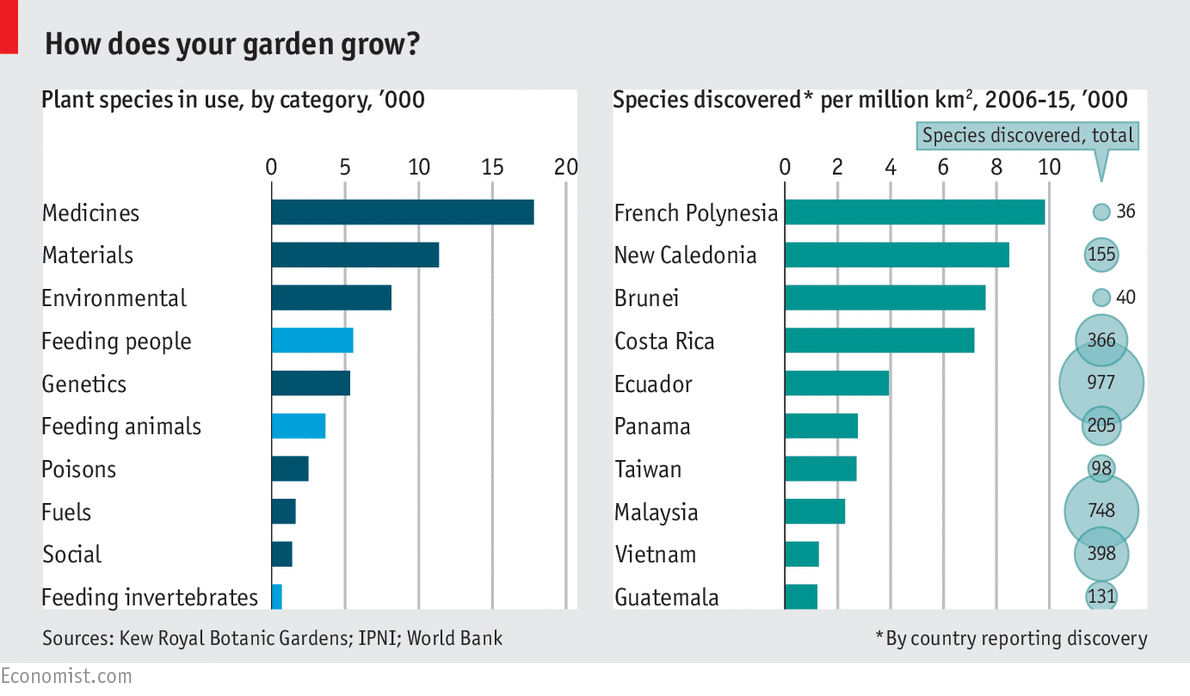
The report’s authors trawled through the world’s botanical records, reconciling species names and deleting duplicates. They estimate that science knows of 391,000 species of vascular plant (things botanical that are not algae or mosses). Of these, 369,000 are flowering plants. The rest are conifers, cycads, ferns and so on, whose heydays were back in times like the Carboniferous or the Jurassic, before the flowering plants really got going in the Cretaceous.
According to the report, the first of what it is hoped will become an annual series, about 31,000 plant species have documented uses. More than 17,000 are employed medically and 9,000 are food for humans or fodder for animals.

That could be the harbinger of a new approach to taxonomy. Botanists in Brazil have recently set up “DetWeb”, a website that collects images of plants from social media so that they can be more easily screened by experts. In the near future, a new generation of citizen scientists armed with smartphones could help to fill in the plant world’s taxonomic blanks.




No comments:
Post a Comment